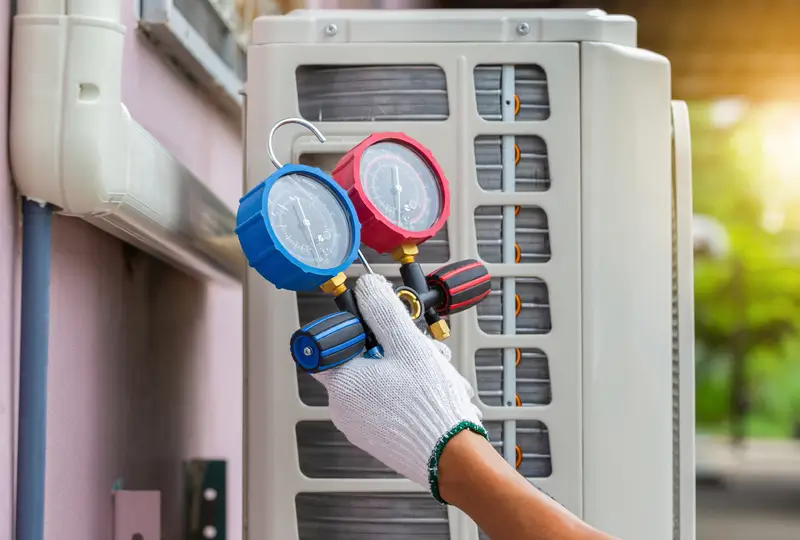As environmental consciousness grows and regulations tighten, industries worldwide are transitioning to A2L refrigerants as a pivotal step towards sustainability. This comprehensive guide aims to demystify the process, equipping businesses and individuals with the knowledge and tools needed to navigate this transition seamlessly. Whether you’re a facility manager, HVAC technician, or simply curious about the green revolution in refrigeration, this guide is your essential companion to a smoother, greener future.
What are the requirements for A2L refrigerant?
From understanding the characteristics and benefits of A2L refrigerants to implementing best practices for safety and compliance, we’ll explore each aspect of transitioning to A2L in detail:
Safety considerations
Safety is paramount when working with any refrigerant, and A2L is no exception. It’s classified as mildly flammable, presenting a different set of safety considerations compared to non-flammable options like R-134a. It’s crucial to understand its flammability characteristics and take appropriate precautions during handling, storage, and installation.
- Flammability classifications: A2Ls are classified as lower flammability (L2) according to ASHRAE standards. While they are less flammable than higher flammability classes, such as A2 or A3, proper safety measures must still be followed.
- Safety standards: Various safety standards, such as ISO 817 and ASHRAE 34, outline guidelines for handling flammable refrigerants. These standards provide recommendations for equipment design, installation practices, and personal protective equipment (PPE) requirements.
- Training and certification: Technicians and personnel working with A2L should undergo comprehensive training to understand the unique safety considerations and protocols. Certification programs offered by industry organizations ensure that individuals are equipped to handle it safely.
- Leak detection and ventilation: Due to their flammability, they require robust leak detection systems and adequate ventilation in enclosed spaces to minimize the risk of ignition.
Compatibility and performance
A smooth transition hinges on ensuring compatibility with existing equipment and achieving comparable performance levels to traditional refrigerants. Compatibility encompasses equipment retrofitting, lubricant selection, and system design considerations.
- Equipment compatibility: Before transitioning, it’s essential to assess the compatibility of existing HVACR (Heating, Ventilation, Air Conditioning, and Refrigeration) equipment. While many systems can be retrofitted to accommodate A2L, some older equipment may require upgrades or replacements.
- Lubricant selection: A2L often necessitates the use of specific lubricants that are compatible with its chemical composition. Lubricant compatibility must be carefully evaluated to prevent system damage and ensure optimal performance.
- System design modifications: Depending on the properties of the specific A2L refrigerant, certain modifications to system design may be necessary to maintain efficiency and safety. This includes considerations such as piping materials, component ratings, and pressure limitations.
- Performance testing: Rigorous performance testing is essential to validate the suitability for specific applications. This testing includes evaluating cooling capacity, energy efficiency, and reliability under varying operating conditions.
Regulatory compliance
Regulatory compliance is a central aspect of the transition, as governments worldwide enact measures to curb greenhouse gas emissions and promote environmentally friendly alternatives. Understanding and adhering to these regulations is crucial for ensuring legal compliance and avoiding penalties.
- Refrigerant regulations: Regulatory bodies, such as the Environmental Protection Agency (EPA) in the United States, impose restrictions on the use of high-GWP refrigerants and encourage the adoption of lower-GWP alternatives like A2L.
- Codes and standards: Building codes, industry standards, and safety regulations dictate the permissible use and handling. Compliance with standards such as ASHRAE standards and local building codes is essential to ensure safe and legal operation.
- Refrigerant management practices: Proper management practices, including tracking, reporting, and disposal procedures, are integral to regulatory compliance. Implementing robust management protocols minimizes emissions and demonstrates a commitment to environmental responsibility.
- Certification and labeling: A2L refrigerants must be properly labeled and certified to indicate their flammability classification, chemical composition, and safety precautions. Ensuring that they are sourced from reputable suppliers and comply with regulatory requirements is essential for legal compliance.

